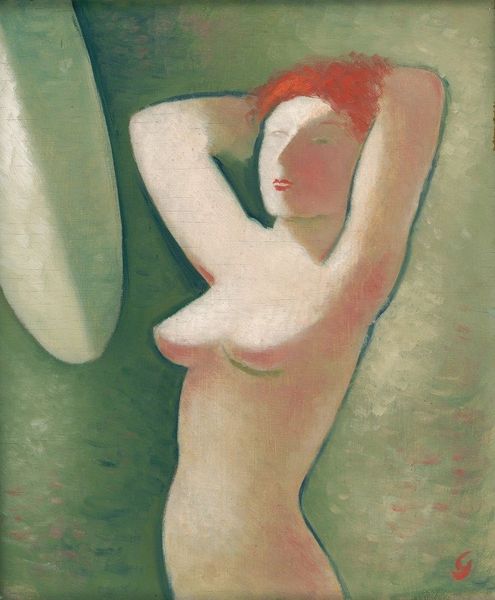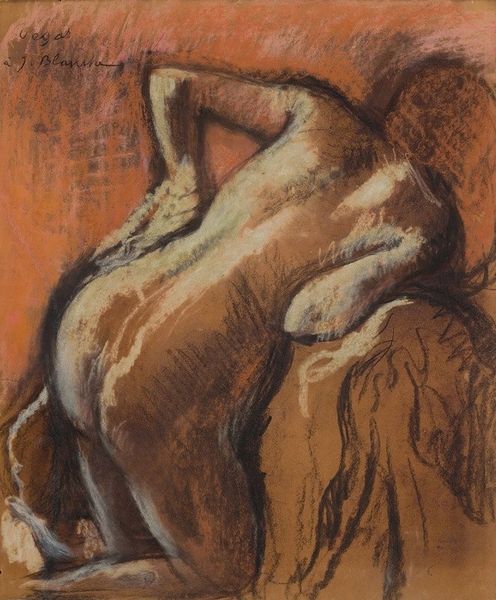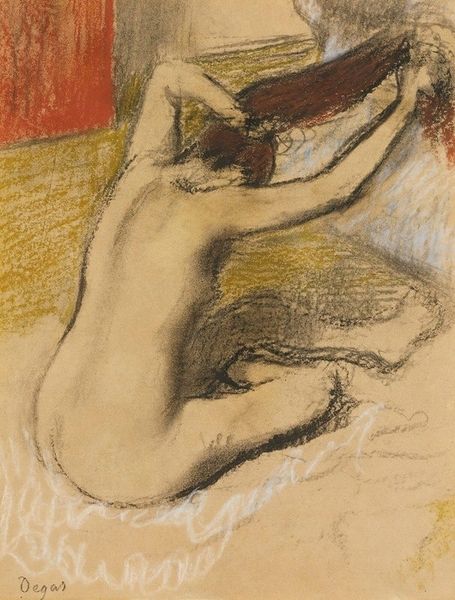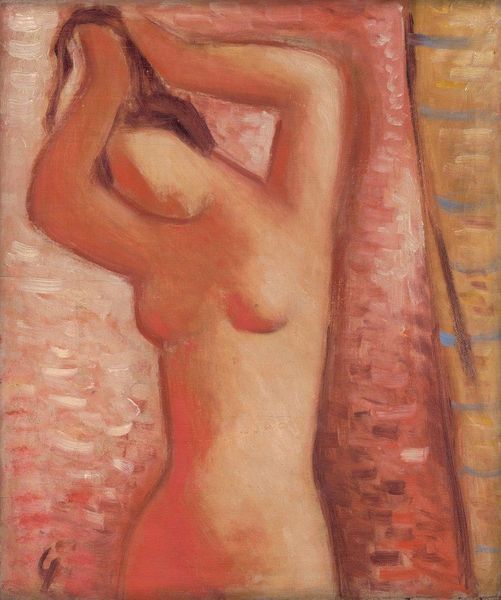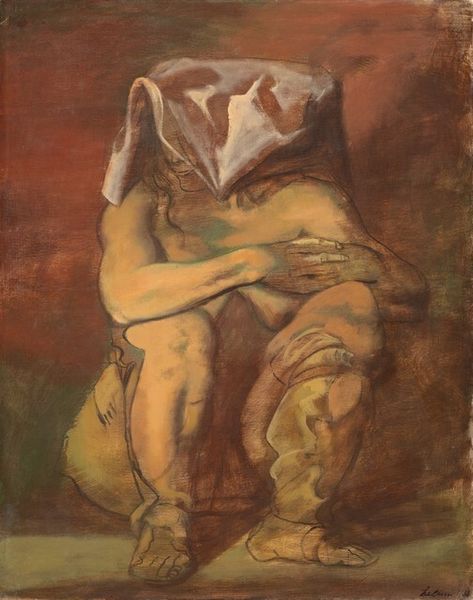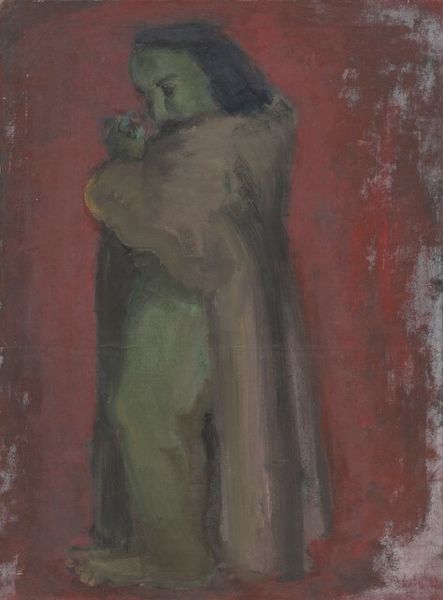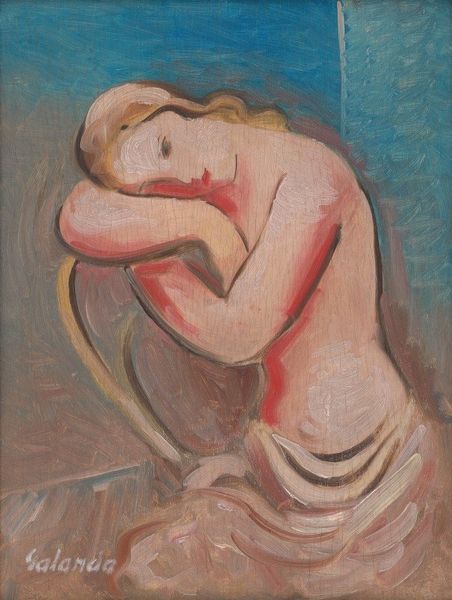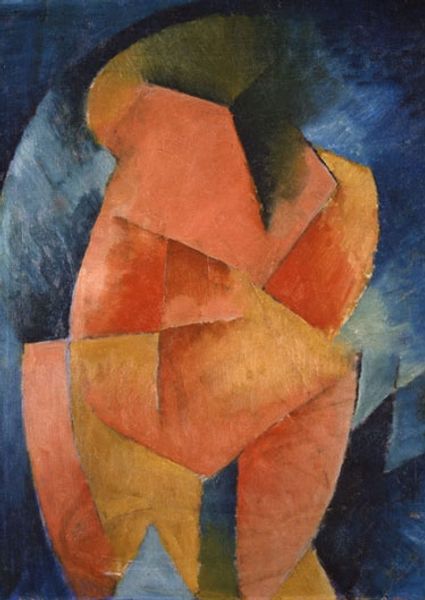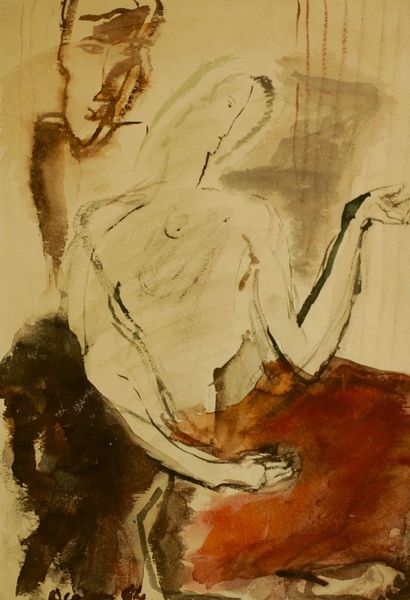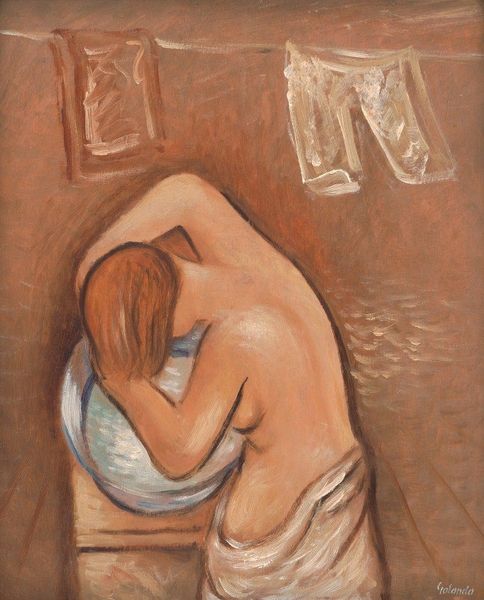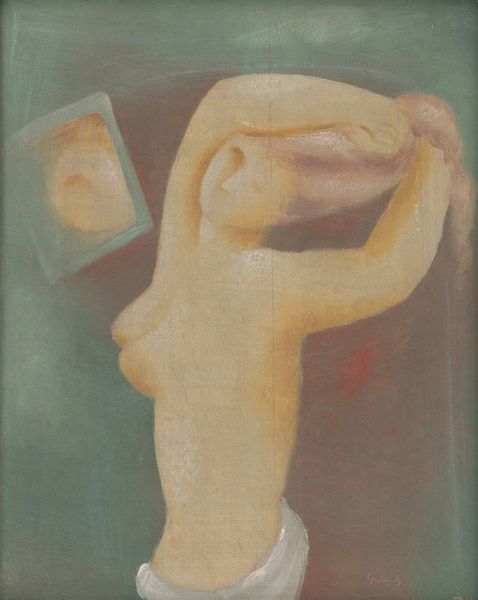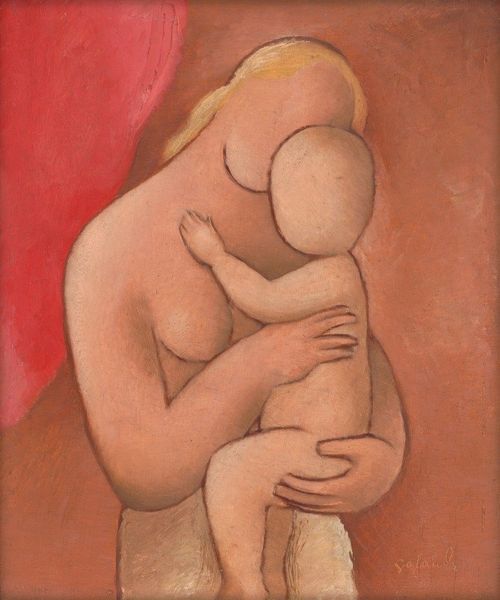
Copyright: Public Domain: Artvee
Editor: Here we have Mikuláš Galanda’s oil painting, "Woman Washing Herself" from the 1930s. The figure is so abstracted, almost pear-shaped, and the palette is so muted and earthy. It feels… vulnerable. What jumps out at you? Curator: It's a compelling study in form and line. Notice how Galanda employs a limited color palette to emphasize the volumes and shapes. The interplay between the ochre tones and the darker outlines creates a distinct spatial ambiguity. What strikes you about the relationship between the figure and the background? Editor: It's almost as if the figure is emerging from, or perhaps dissolving into, the background. There's not a strong sense of depth. It's very flattened. Is this a common feature of Galanda's work? Curator: Precisely. He frequently explored this flattening of space, which contributes to the painting's modern sensibility. Look at how the simplification of form enhances the painting's emotional intensity. The reduced detail demands more from the viewer, focusing our attention on the essential forms and their arrangement. Do you agree? Editor: Absolutely, the abstraction makes it much more about the feeling of the subject rather than a literal depiction. It prompts reflection, rather than recognition. I now also wonder if the flattening calls attention to the materiality of the painting itself? Curator: That is perceptively said. Through this visual language, Galanda highlights the surface, the canvas itself, thus accentuating the constructed nature of the image. Editor: Thank you. Seeing how Galanda uses the lack of detail and flattened space makes me appreciate the construction of the artwork itself.
Comments
No comments
Be the first to comment and join the conversation on the ultimate creative platform.


